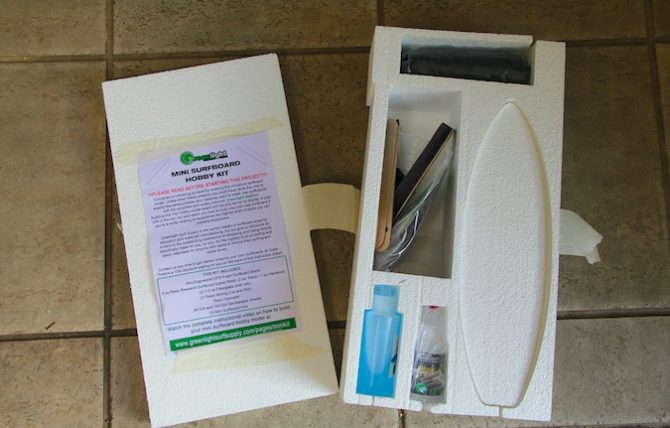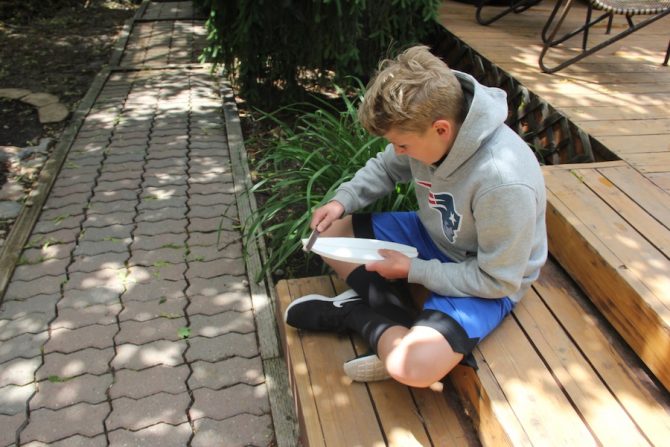
How real boards are made.
My little dudes like to ride waves. Which makes me happy. Before they actually rode waves, they imagined themselves riding waves with little toy “guys.” Guys that pulled big turns in the bathtub, airs on the carpet, or popped-up next to the Star Wars battleships to mind-surf along side them. They’d use anything for a surfboard whether it was a popsicle stick or one of the mini plastic Playmobil boards that went on the toy van. But as they’ve gotten older and continued to ride more waves themselves, I find them asking more and more questions about how those things under their feet are made.
A company called I Hate Surfing (I’ll explain) has created a mini surfboard kit, a really cool way to teach your kids –or anyone, really – about proper board design and manufacturing. I Hate Surfing, at its core, isn’t really about hate. It’s about a disdain for what surfing has become: over-commodified and lacking soul. The folks at IHS want people to get back to riding boards made by real shapers (or themselves) and are working to restore surfing as a community (read about the brand’s philosophy here).
But back to this kit, which provides a step-by-step instructional for your kids to build their own mini surfboards. One of the first questions my kids asked me was, “Why do you need a custom board?”
“Why do we need custom boards,” I choked back in response. “Well, a custom board allows you to configure the board to your body, giving you the perfect balance of speed and maneuverability as it pertains to your height, weight, and surfing ability.”

IHS’s mini board kit: blank, sandpaper, resin, fiberglass sheets, rubber gloves.
They stared at me incredulously. “Listen,” I said, “It just helps you surf better. You’ll see.” They’re obviously ready for custom boards. But in the meantime, IHS’s model kit allowed us to dive in, as it comes with a mini surfboard blank, complete with stringer, a 2+1 resin kit, fiberglass sheets, sandpaper, rubber gloves and mini fins to attach afterwards.
We started by shaping the board to my kids’ liking (“nice and smooth”). Of course they wanted a fish shape so I carved the tail with a razor blade. Once we had it sanded to their “smoothness,” we moved on to the painting. Evan obsessed over the color, and his own logo (EC), but in the end went with yellow and a simple black outline. Thing looked good. Then we went to the glassing.

Sand young grasshopper.
The cool thing about the IHS kit is that the process is designed to mimic nearly exactly how you’d build a board: sand, paint, glass. And that’s where it gets really educational. The boys could see the 2+1 resin mixture and how the fiberglass sheets adhere to the foam and how the entire process is about refining the board as you sand and add more fiberglass until you have a finished product. There was a life analogy in there somewhere but I left it alone. I did explain that this is how dad fixes his boards after he dings them (or after mom backed into the surfboard rack in the garage).
IHS is giving them away for nearly free. You just have to pay shipping and handling which usually runs about $20. This mini board building kit was a cool distraction during the pandemic. But it would work anytime as it’s an easy way to understand the process, and love, that goes into making real surfboards.
Find out more about the mini surfboard kit here.

